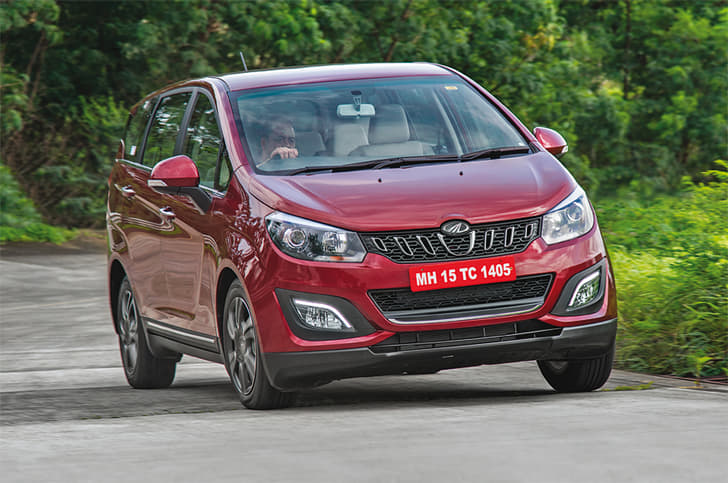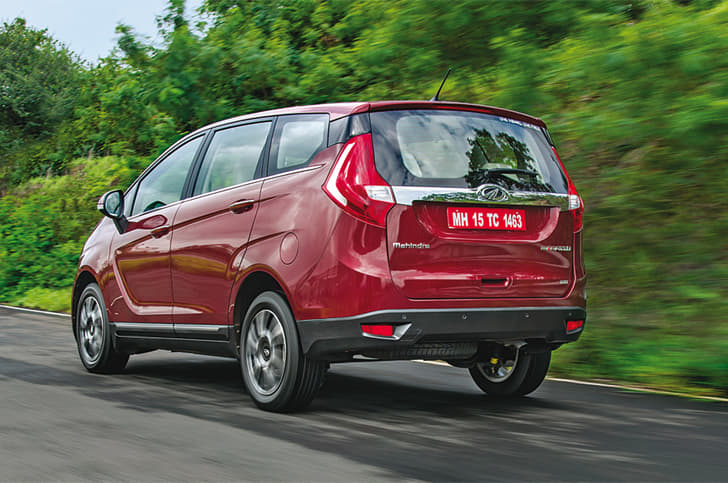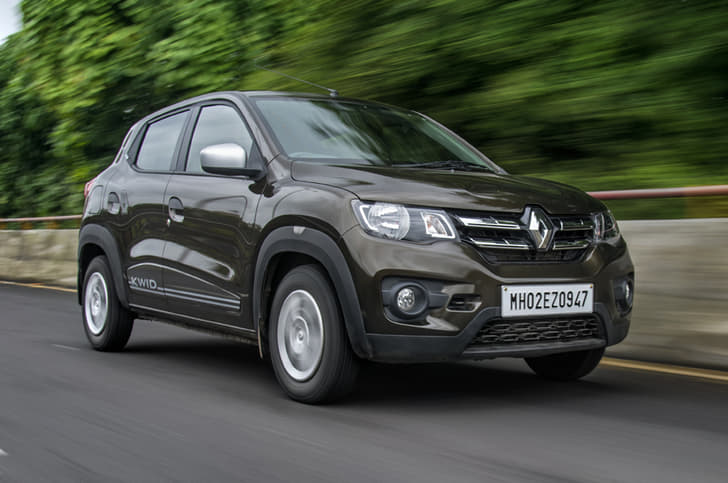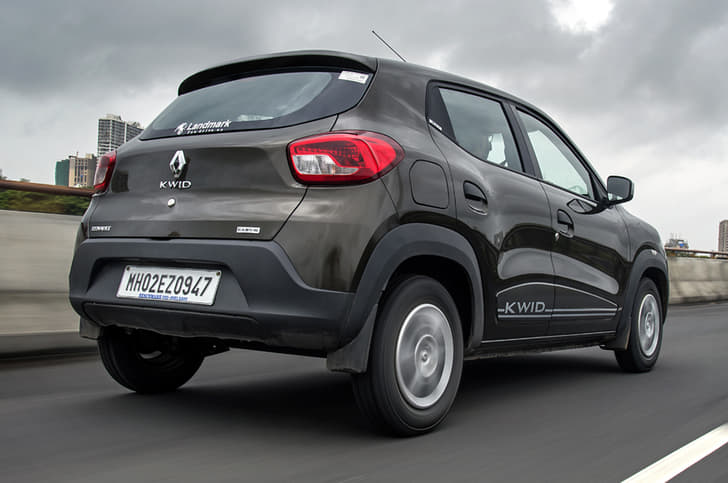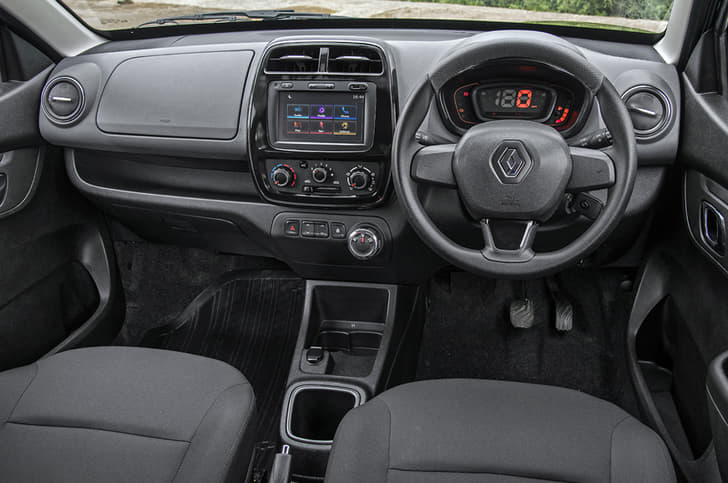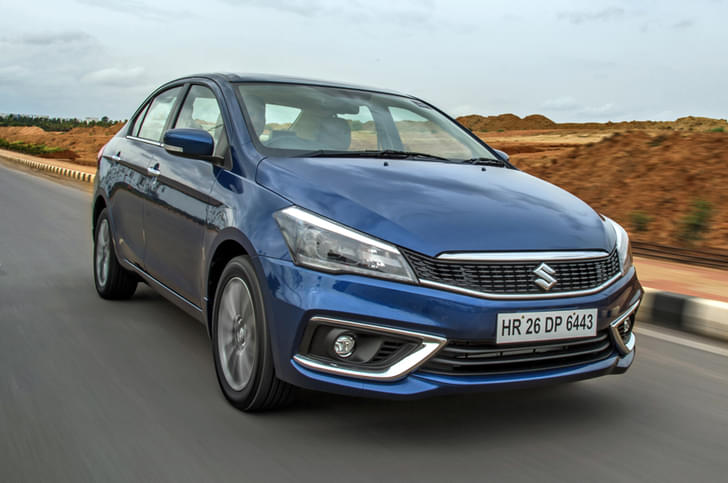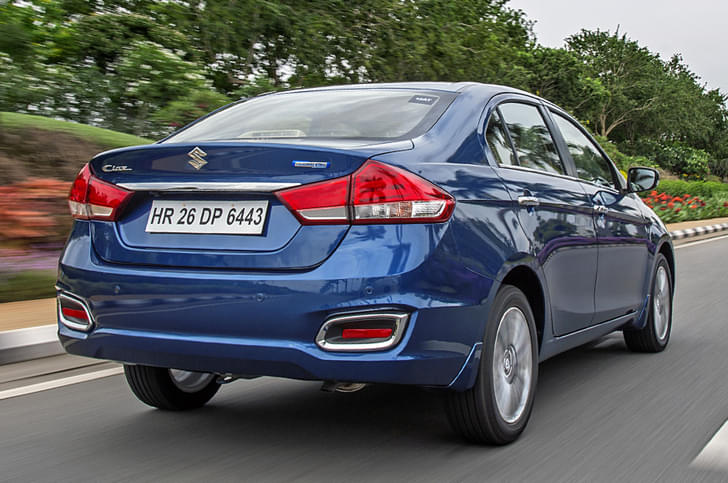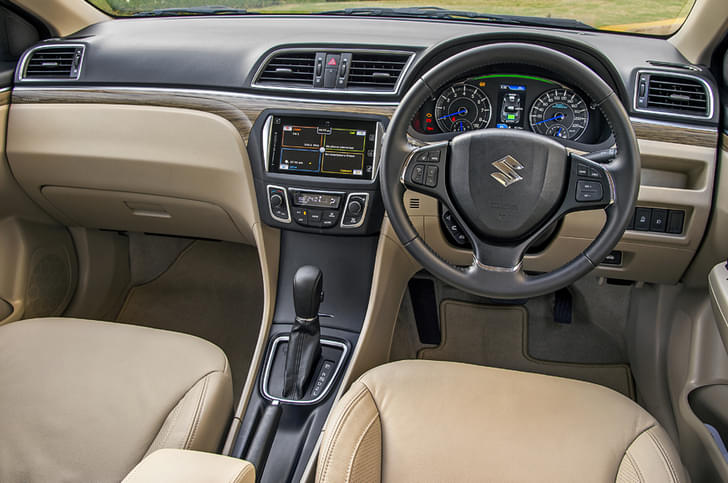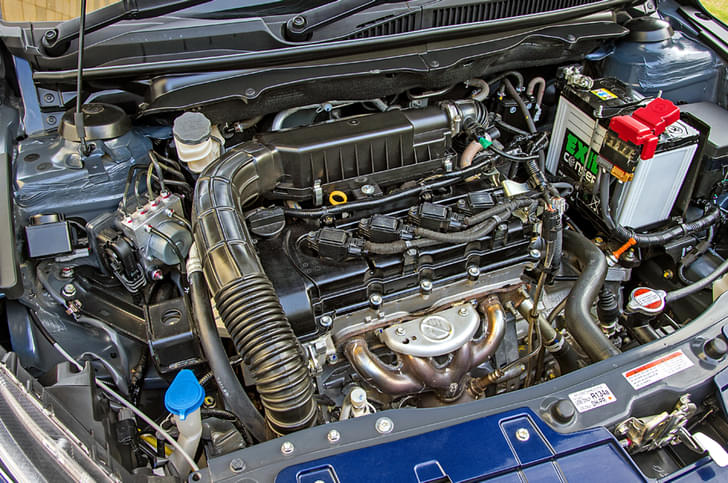What is it?
It’s an-all out assault on the MPV market and Mahindra & Mahindra is leaving no stone unturned with the Marazzo to grab a slice of a segment that’s been locked out by the invincible Toyota Innova Crysta at one end and the popular Maruti Suzuki Ertiga at the other. In fact, the Marazzo is not just an all-new model, but the start of a new chapter for Mahindra that is trying to reinvent itself with a fresh approach towards its future models.
To that end, the Marazzo has been conceived from a clean sheet of paper. It gets an all-new chassis, a new engine and gearbox, new mechanicals and crucially, comes with a fresh design language. Even the people behind it are all new. The Marazzo wasn’t developed in India but is the first car to be created by the Mahindra North American Technical Centre (MNATC) in Michigan, USA. The result is a car that neither looks like a Mahindra nor drives like one. But, after hitting the reset button, how big a step forward is it?

What’s it like on the outside?
After getting roasted in the blogosphere for the design and styling of its recent launches (notably the bizarre looking KUV100) Mahindra’s design team seems to have erred on the side of conservatism with the Marazzo. It’s a smooth and well-rounded design that may not instantly wow you but it certainly won’t put you off either. In fact, sitting on its rather long 2,760mm wheelbase, the Marazzo is nicely proportioned and has a typical cab-forward MPV silhouette. Viewed from the front, the short bonnet and small headlamps don’t give it the same road presence as the Innova, which stands out with its longer bonnet, swept back headlamps and large grille. However, the Marazzo distinguishes itself with some interesting touches like the mock LED strips above the headlights, wide door-mounted mirrors and some sculpting on the bonnet. The toothy (or should we say shark-like) Mahindra grille, other than the badge, is the only thing to tell you that this is a Mahindra. The Marazzo is that different from anything else in the company’s model range.
There’s some interesting detailing on the sides as well, like the cuts above the bulging wheel and the character line that runs across the sides intersecting the door handles. If there is a Pininfarina hand in the Marazzo’s design its got to be the prominent creases on the front doors, which look influenced by the sculpted doors of the Ferrari 456.

Giving the Marazzo a purposeful tipped-forward stance is the rising window line, neatly accentuated with a chrome strip. However, the window line rises a touch too sharply towards the rear which makes the rear flanks look heavy and this in turn dwarfs the rear wheels. Also, a bit out of sync with the otherwise clean and uncluttered design are the rear tail lights which, though are very prominent, look a bit oversized. Design elements like the floating roof and flush-fitting windows lend an air of sophistication whilst on the tail gate, the rich looking chrome bar is a premium touch and also serves to accentuate the Marazzo’s width. Overall the styling may not grab your heart but there’s no doubt that the Marazzo has an upmarket air about it that makes it look more ‘family car’ than ‘people mover’.
If the styling isn’t very unique then the chassis certainly is. The Marazzo uses a hybrid chassis that combines a ladder frame and a monocoque, which Mahindra says is the first of its kind – the company has even filed a patent for the design. We certainly don’t know of any ladder-frame MPV with a transverse engine and a front-wheel-drive layout which, according to Mahindra, posed its own engineering challenges. “We had to be a bit creative with the front suspension to accommodate the engine and drive line,” said Keith Takasawa, Head of Product Development of MNATC.
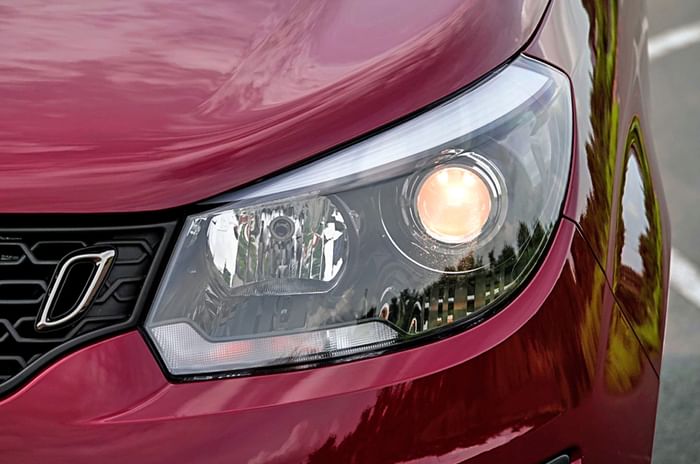
The Marazzo uses a double wishbone suspension up front and a twist beam suspension at the rear which are mounted to the ladder frame for optimal wheel location. The ladder frame itself has compact cross sections and is integrated with the bodyshell for maximum rigidity without raising the ‘step up’ height dramatically. But why did Mahindra opt for this complex chassis design and not go in for a conventional (and lighter) monocoque like the Ertiga and Lodgy? “We wanted the best of both worlds,” said Takasawa, who feels that the Marazzo has the packaging efficiency of a monocoque as well as the long term durability that only a good old body-on-frame ladder chassis can promise on Indian roads. However, this has come at the cost of weight and the Marazzo weighs around 1.6- tonnes. That maybe light compared to other body-on-frame MPVs like the Innova, which weighs upwards of 1.8 tonnes but compared to the Ertiga, the Marazzo is a good 400kg heavier.
What’s it like from the inside?
Like the exterior, the interior design is an exercise in restraint and for a no-nonsense family car it really works. Strong horizontal elements divide the dashboard, which is a good mix of textures and materials. The black and light beige combo works really well whilst the piano black panel gives it a premium feel. The enamel white accents are too bright a shade but some of our testers were of the opinion it gave added relief to the broad and tall dashboard. What there’s no doubt about, however, is the overall cabin quality. The black plastics on top of the dashboard and door trim tops are richly textured and whilst the plastics lower down aren’t as good, they are far from cheap or tacky. The seats, too, on this top-spec M8 variant are superbly finished and feel like they’ve been plucked from some European mid-size car.
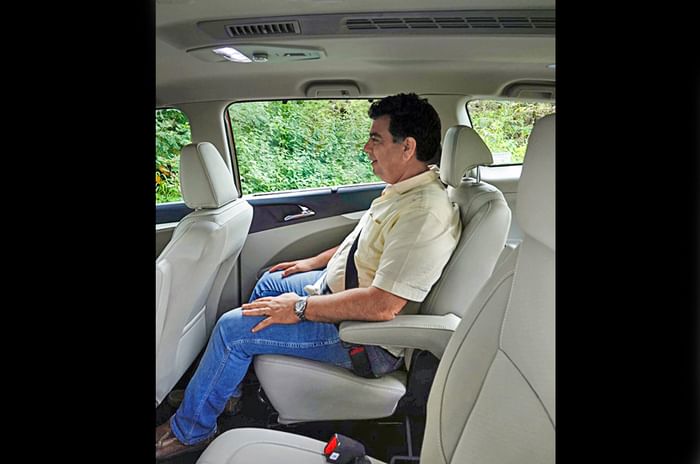
The all-new 7-inch infotainment system takes pride of place and is very clear and easy to use. Android Auto is standard but Apple Car Play is expected pretty soon. Also easy to read is the instrumentation. The speedo and tacho dials look a bit ordinary but there’s no faulting their legibility. The Multi-Information-Display (MID) screen too has large fonts and crisp graphics.
There’s no faulting the driving position either despite the lack of telescopic adjust for the steering wheel. You sit nice and high, visibility outside is terrific and all the controls fall easily to hand. We just loved how big the foot well, which offers a large area for all the pedals to be nicely spaced out. There's enough room for a dead pedal as well. A lot of the switchgear is from the Mahindra parts bin, for instance, the HVAC controls (from the XUV500) and the steering controls (from the SsangYong Tivoli). The steering wheel is new but feels a bit skinny to hold and could have been thicker.

Being an MPV you would expect lots of storage spaces and cubbyholes in the Marazzo, and it doesn’t disappoint. All door pockets can hold 1-litre bottles whilst the centre console has a total of four cup holders. The pair of cup holders between the front seats can be removed to provide a deep box to store stuff with a smart tambour cover. The cooled glovebox is large and there’s a pretty deep storage box on top of the dash as well.
Logical and well laid-out the cabin may be but it’s not all perfect and there are quite a few ergonomic glitches that can be quite irritating, so let’s get them out of the way. Firstly, the aircraft throttle-style hand brake lever may look cool but it’s fiddly to use and fouls with your hand every time you try to plug into the USB ports, and is not made any easier by the location of the USB ports, which are positioned too low. The space between the front two arm rests, too, is quite narrow for you to easily access the storage box. And though the generous tray on top of the dashboard is useful, it’s quite a stretch to access and small items can’t be seen because it’s too deep. The worst snafu is that you can’t access the rear door bins with the doors shut and have to open them to pull out your bottle.

Let’s move on to the good bits, then. The roof-mounted cassette-style air-conditioning unit is quite unique and Mahindra says it offers even and diffused cooling for all three rows. We had no complaints on our short drive on a cool monsoon day but the true test will be in the blazing summer next year. With a roof mounted air-con unit there’s no possibility of a sunroof at all, which in an MPV is hardly a deal breaker. Whilst on the subject of roofs, we just loved the high quality knitted headliner, which feels so much nicer than the scruffy one you get on the Innova.
MPV owners really pack the family in and that too for long distances so the seats have to be really comfy. On this score, the Marazzo comes out trumps. The front seats offer good lateral support and are designed to take large frames but it’s the pair of captain seats in the middle row that are truly impressive. Firstly, the seating position is spot on so you sit nice and high without bending your knees. Under-thigh support is generous thanks to the long seat base and the arm rests, too, are perfectly positioned. The only grouse we had was that the cushioning was a bit too excessive in the lower back region and a flatter seat would be more comfortable. The captain seats slide back and forth so there’s enough legroom even for tall people. The huge rear window gives a fantastic view of the outside and if the excessive glass area bothers you, window blinds (standard on the M8 variant) can be rolled up to block the sun. For those of you who are interested, the Marazzo will also be available in an 8-seat configuration with a 60:40 split folding arrangement.
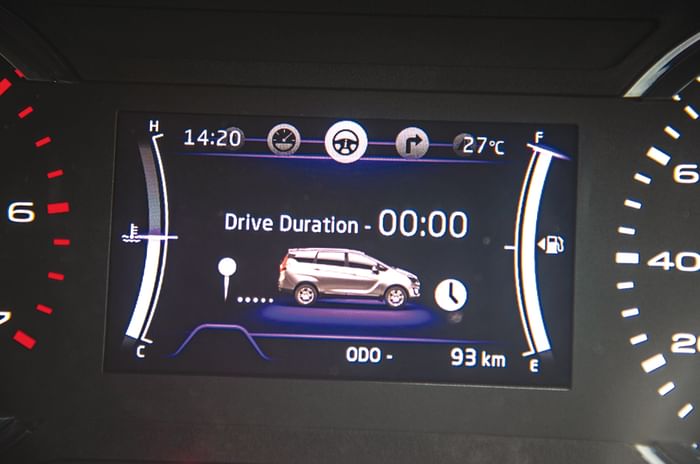
Accessing the third row doesn’t require you to practice yoga thanks to a relatively low (by body-on-frame standards) step-up height into the cabin and a one-touch release which flips and folds the middle seat in a shot. Space is also pretty impressive by third-row standards and tolerable even for adults if the distances are not too long. What’s missing is a recline function for the backrest which would have given it an extra degree of comfort. However, it’s safe to say that the Marazzo can be used as genuine seven-seater.
Luggage space with all three rows in place is best for a few soft bags but with two rows down you can use the Marazzo to move house.
In terms of safety, the Marazzo comes with dual airbags (for the driver and co-driver) as standard but top versions, at least, should have offered more. Useful bits of equipment are reverse parking sensors and a rear-view camera, which are a must for a car of its size. However, features like keyless entry and a push button stop/start are missing.
What’s it like to drive?
Power is provided by an all-new 1497cc four-cylinder diesel engine which belongs to the same mFalcon engine family as the KUV’s 1.2, three-cylinder diesel, but with an extra cylinder. The first and most lasting impression of this new motor is how refined it is. It’s quiet at idle, gets mildly vocal when you pile on the revs and it’s only when you’re pushing to the rev limit that it gets a bit noisy. Whilst cruising and driving at moderate revs, you’ll be seriously impressed by how silent it is. What’s the secret? “We worked on optimising the engine block stiffness and even the sump stiffness to cut all vibrations at the source,” said Takasawa.
Mahindra has done a lot to reduce engine vibrations and it has achieved it by using an offset crank, special engine mounts and a dual mass flywheel. In addition, there’s a lot of sound deadening material all-round to filter out as much residual engine noise from the cabin as was possible. The other big surprise is how light the clutch is – possibly the lightest we’ve experienced on any seven-seater. “We focused a lot on reducing clutch effort as we know MPVs are driven long distances in the city. So, we worked on the clutch pedal return spring rates and master cylinder pressures to make the clutch as light as possible,” explained Takesawa.

The Marazzo pulls away cleanly from standstill on Mahindra’s Chakan track and initial impressions are all about its responsiveness. The 1.5 diesel has wonderfully linear power delivery and a pretty broad torque spread which works on part-throttle inputs. At low revs you won’t miss the distinct turbo lag and although this engine is nowhere near as tractable as, say, Honda’s 1.5 diesel, it doesn’t get as bogged down as Suzuki’s 1.3 diesel on the Ertiga. Once you get past the 1500rpm mark it pulls fairly strongly but without any vigour. It also comes with an EcoSense mode which lowers the power delivery to 100hp instead of 123hp to enable better efficiency. Speaking of which, Mahindra claims an ARAI-tested 17.3kpl fuel-efficiency figure for the Marazzo, which is impressive to say the least.
It’s when you want to drive in a hurry that you expose one of the Marazzo’s few weak points – a poor power-to-weight ratio. There’s only so much a 123hp engine can do in a car that weighs over 1.6 tonnes. Hence, flat-out acceleration isn’t very impressive and the Marazzo builds up speed slowly. On the long straights at the Chakan track you can feel the Marazzo labouring past 100kph. It doesn’t have a sense of urgency and appears to only gather speed in a relaxed manner. This means overtaking, especially on a single-lane road, would need more planning and patience, especially when the seven-seater is loaded. The Marazzo does feature cruise control, for when you really want to enjoy the long haul, however.
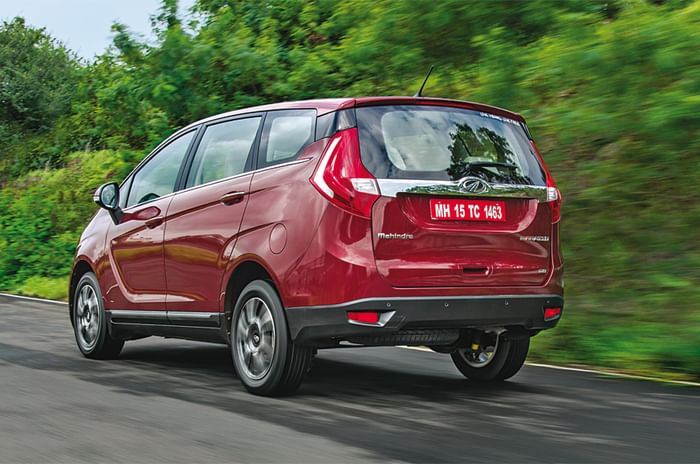
The 6-speed manual gearshift is fairly light and easy to slot though it misses that precise, rifle bolt feel of a good Japanese ‘box. Also, I found the gear lever, which sits high up, a bit too long and as a result the shift throw is correspondingly wide. Takesawa agrees but says using a long lever was “in the interests of reducing effort.” An automatic variant will join the range along with the launch of the BS-VI version, at which time a petrol engine will also make its debut on the Marazzo.
What about ride and handling?
It’s the way the Marazzo ride and handles that surprises the most because you don’t expect a Mahindra to have tidy road manners. Be it the Scorpio or the XUV500, all Mahindra SUVs have unsorted dynamics. However, in the case of the Marazzo, MNATC seems to have got it right straight out of the box. For starters, the steering is the best we’ve experienced on any Mahindra. It’s got decent feel off-centre and weights up consistently as you pile on the lock. It’s a variable assist unit, so it feels light at low speeds and gives you confidence when you go quickly. Directional stability, too, is excellent and our test car which rode on 17-inch alloys (215/60 R17 tyres on the top-spec) held its line well through fast corners. Of course, there’s lots of body roll if you attack corners with gusto but overall the handling is benign and fail-safe, which makes it a very easy car to drive.
It was hard to judge the ride on the smooth Chakan track but we could sense a touch of low-speed lumpiness, typical of body-on-frame cars. However, when you up the pace, that firmness disappears. I suspect that with a full load of passengers and on a bad road, the Marazzo’s beefy suspension will come into its own and ride comfort will be one of the talking points.
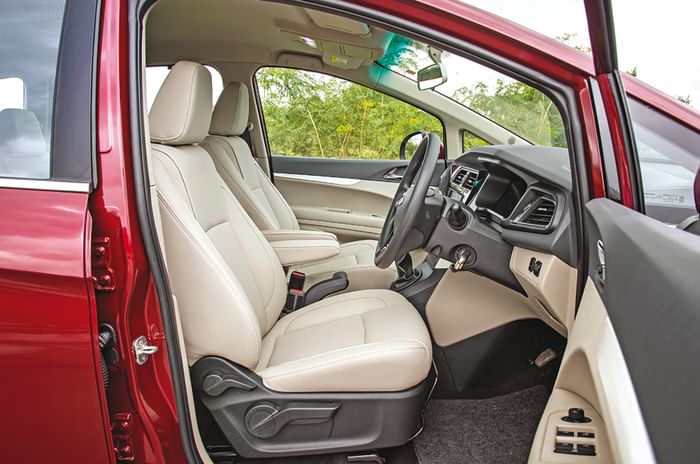
Also, well up to the task are the disc brakes that are standard on all four wheels. They effectively haul down the big Marazzo but the pedal feel could be a better. The brakes are a bit spongy and there’s excessive pedal travel; I would have preferred a firmer and earlier bite point.
However, it must be said that the Marazzo’s ride and handling is a generation ahead of any other Mahindra vehicle and is more than a match for the Innova.
Should I buy one?
The Marazzo doesn’t feel like a Mahindra and that’s a good thing. It’s a thoroughly engineered product that sets new standards for refinement, ease of use and comfort. Yes, performance isn’t as effortless as we would like and there are some ergonomic issues but overall it’s a sophisticated package that feels upmarket enough to pass off as a mainstream family car.
Priced from Rs 9.99 lakh to 13.90 lakh (ex-showroom, Delhi), it slots between the Ertiga and the Innova and has the potential to pull buyers from both ends of the MPV market. It’s a lot of car for the money and undoubtedly great value. Looks like hitting the reset button really has paid off!

